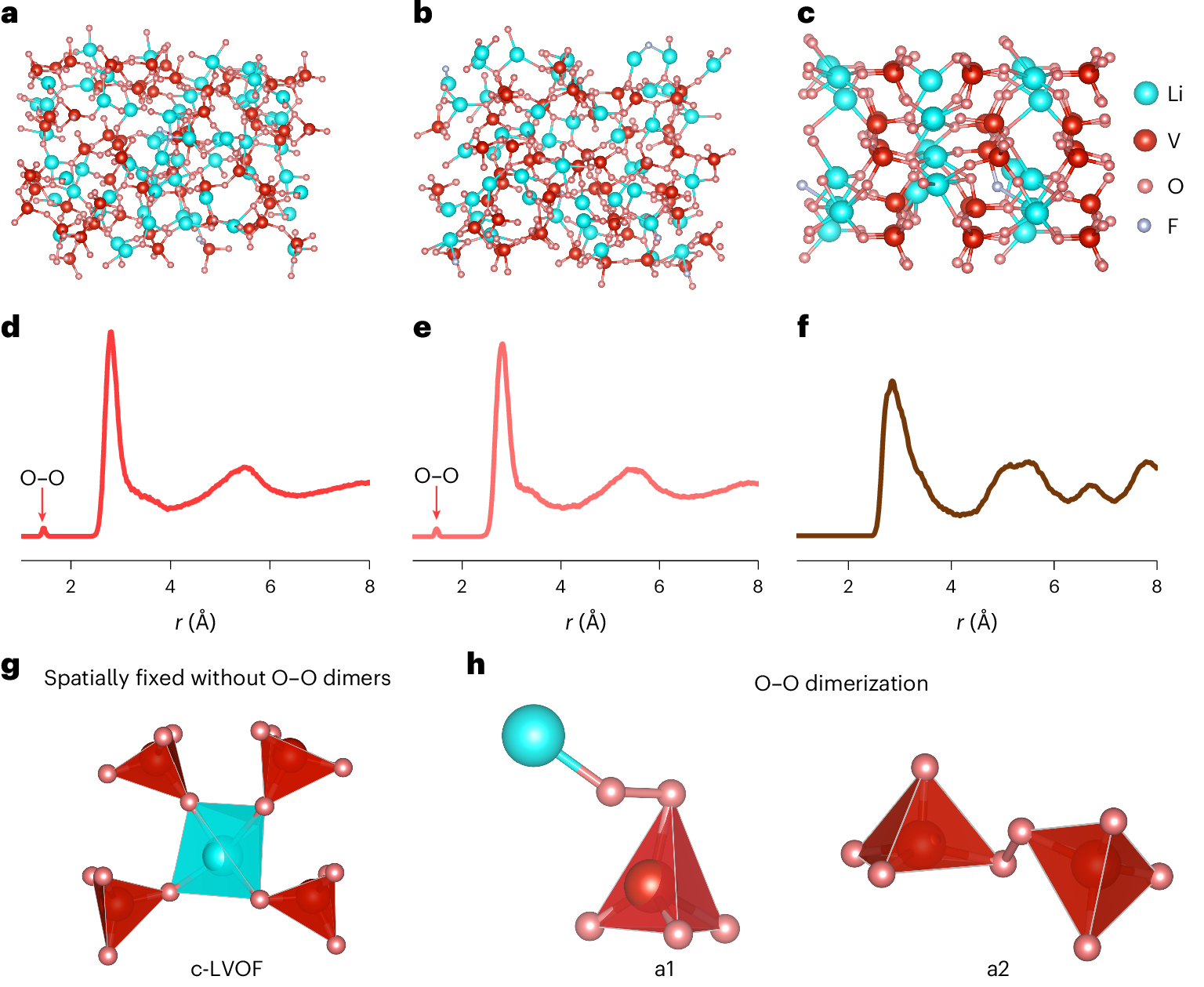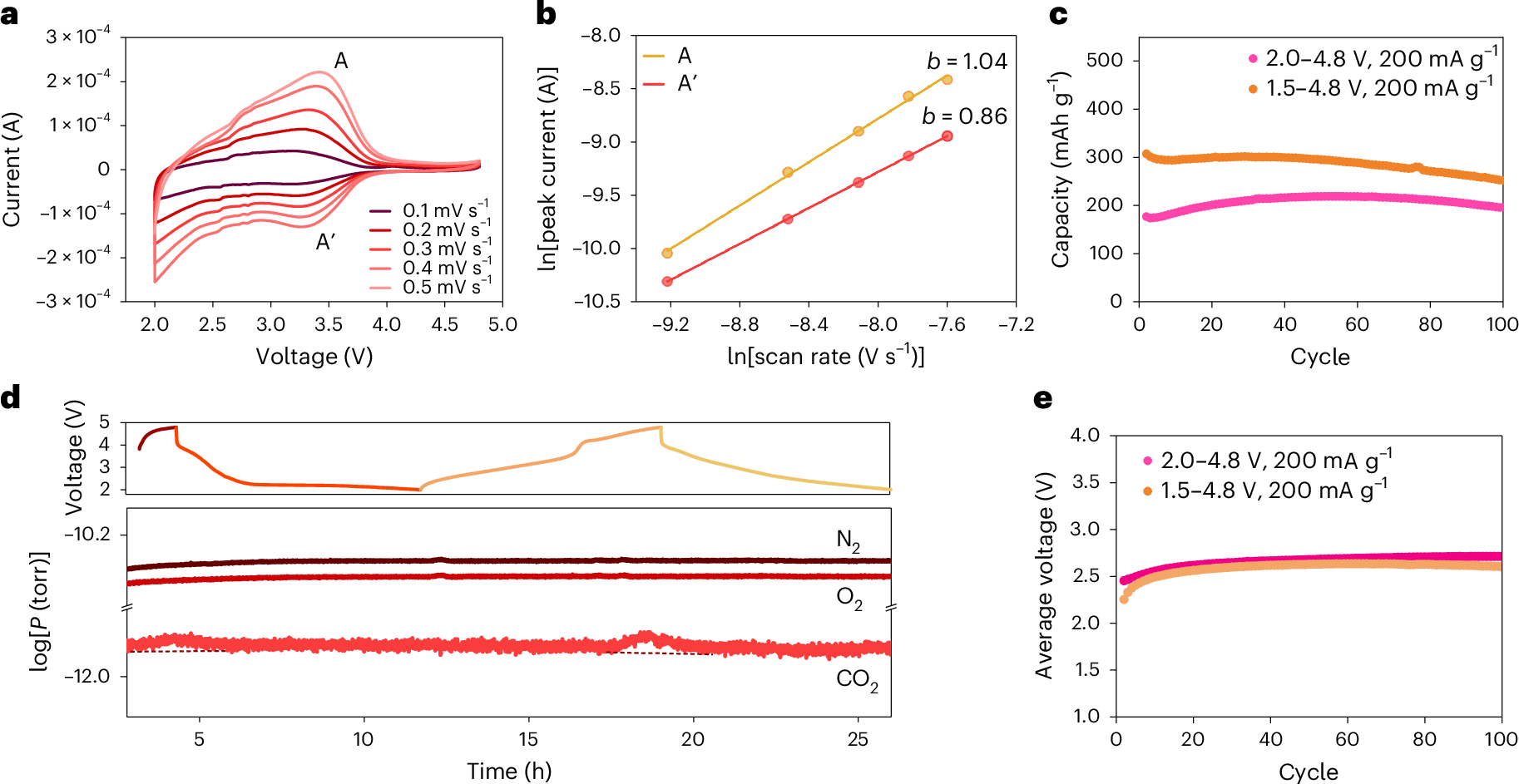Peking University, August 13, 2025: In a significant leap toward next-generation lithium battery design, researchers from the School of Materials Science and Engineering at Peking University, led by Professor Xia Dingguo, have discovered a previously unknown anionic redox mechanism in an amorphous Li-V-O-F cathode featuring tetrahedral coordination. Published in Nature Materials under the title “An amorphous Li-V-O-F cathode with tetrahedral coordination and O–O formal redox at low voltage”, the study demonstrates exceptional electrochemical performance and stability, surpassing the limitations of conventional crystalline cathodes and expanding the known boundaries of anionic redox chemistry.
Background: Why amorphous Li-V-O-F?
Conventional high-capacity cathodes rely on crystalline frameworks with octahedral coordination, which often suffer from oxygen loss, structural collapse, and voltage fade at high voltages. Historically overlooked due to their disordered nature, amorphous materials lack long-range order but offer unique atomic arrangements and structural flexibility, making them promising candidates for novel redox mechanisms.
Why it matters
This study redefines the limits of anionic redox chemistry by proving it can occur outside crystalline lattices and without octahedral coordination. The discovery of reversible oxygen dimer (O–O) redox in an amorphous, tetrahedrally coordinated structure opens up new pathways for designing high-capacity, structurally stable lithium-ion batteries.
Key findings

Fig. 1: Resulting simulated delithiated structures under AIMD.
The study reveals that the amorphous Li-V-O-F cathode maintains a tetrahedral coordination environment even after lithium extraction, challenging the conventional reliance on octahedral crystalline frameworks for anionic redox. Upon charging at ~4.1 V, the material forms O–O coordination pairs at 1.3–1.5 Å, indicating oxygen dimer formation. Spectroscopic analyses, including X-ray absorption and resonant inelastic X-ray scattering (RIXS), confirm that oxygen atoms, not vanadium, undergo oxidation, highlighting a dominant anionic redox mechanism involving reversible peroxo-like O–O bond formation and dissociation. First-principles molecular dynamics simulations demonstrate that the amorphous structure enables spontaneous and thermodynamically favorable oxygen dimer formation, unlike rigid crystalline analogs (Fig. 1: Simulated delithiated structures). Electrochemical testing shows the material delivers a high capacity of over 300 mAh/g within a 1.5–4.8 V voltage window, exhibits pseudocapacitive kinetics driven by nanoscale channels enabling rapid lithium-ion transport, and maintains structural integrity with no oxygen evolution or voltage fade under prolonged high-voltage cycling (Fig. 2: Electrochemical performance). This calculation aligns well with experimental observations, highlighting the intrinsic structural features and thermodynamic driving force of amorphous phases in facilitating O–O dimerized redox reactions.

Fig. 2: Electrochemical performance of the LVOF cathode.
Future Implications
Long considered too disordered for practical applications, amorphous materials now emerge as strong contenders for future batteries, offering high energy density, enhanced stability, and design flexibility beyond crystalline limits. This breakthrough could advance lithium-ion battery performance in electric vehicles, grid storage, and wearable electronics.
*This article is featured in PKU News "Why It Matters" series. More from this series.
Read more: https://doi.org/10.1038/s41563-025-02293-9
Written by: Akaash Babar
Edited by: Zhang Jiang
Source: PKU News (
Chinese)

